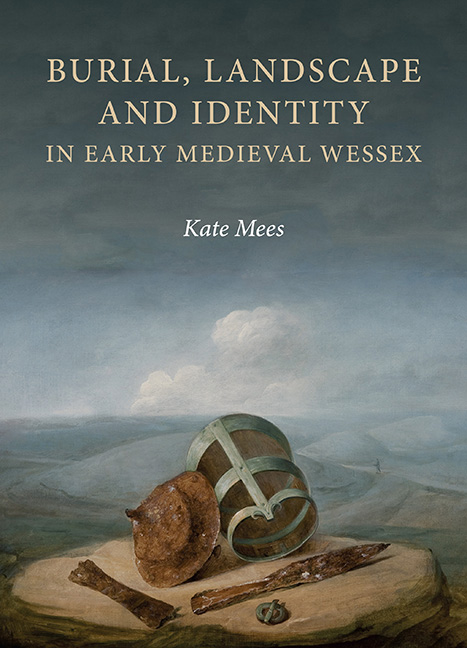Book contents
- Frontmatter
- Dedication
- Contents
- List of Illustrations
- Acknowledgements
- List of Abbreviations
- Note on Period Terminology and Other Definitions
- Introduction: Perspectives, Approaches and Context
- 1 Monument Reuse and the Inherited Landscape
- 2 Topography and Ritual Life
- 3 ‘Britons and Saxons’?
- 4 Land Use, Territoriality and Social Change
- 5 The Church and the Funerary Landscape
- Conclusions
- Appendix: Gazetteer of burial sites in the study area, c. AD 450–850
- Bibliography
- Index
- Anglo-Saxon Studies
- Frontmatter
- Dedication
- Contents
- List of Illustrations
- Acknowledgements
- List of Abbreviations
- Note on Period Terminology and Other Definitions
- Introduction: Perspectives, Approaches and Context
- 1 Monument Reuse and the Inherited Landscape
- 2 Topography and Ritual Life
- 3 ‘Britons and Saxons’?
- 4 Land Use, Territoriality and Social Change
- 5 The Church and the Funerary Landscape
- Conclusions
- Appendix: Gazetteer of burial sites in the study area, c. AD 450–850
- Bibliography
- Index
- Anglo-Saxon Studies
Summary
This book set out to explore diachronically the relationship between places of funerary ritual and the antecedent landscape in Wessex, from the fifth century through to the end of the long eighth. It has interrogated why mourners selected particular locations, frequently harnessing both the natural topography and remnants of the past to provide structure and points of reference for burial practices. More broadly, it has sought to contextualise these mortuary choices within a trajectory of socio-political and landscape change, which took the region from a mosaic of small, kin-based, predominantly pastoral groups towards the territorial and political coherence of West Saxon society. It is undoubtedly through the archaeological evidence – and, explicitly, the burial record – rather than through the historical narratives that we are best placed to attempt to understand these shifting early political dynamics and the nebulous social order of the Early Anglo-Saxon period. That said, a more rounded picture is to be gained by taking advantage of a full range of available evidence, drawing on complementary material such as place-names and documentary sources, and through an awareness of the environmental factors that contributed to shaping the character of settlement and burial and informed communities’ worldviews and experiences of their surroundings.
Prehistoric and Roman remains were consciously selected as the foci for a great many funerary locales in early medieval Wessex: more than half of the corpus of burial sites in the study area were identified as having been cut into or placed within 50m of an ancient feature, while over 80 per cent were located within 300m of such a feature. There is, of course, nothing novel about the notion that early medieval communities reused and recycled elements of the ancient past in mortuary contexts. As research conducted at a national and micro-regional level by scholars such as Howard Williams and Sarah Semple has already revealed, monument reuse was a remarkably widespread and long-lived tradition. But through the close-scale, intensive and holistic approach taken by this regional study it is possible to offer new insights into the subtleties of interaction with different types of antecedent site and the cultural, topographic and taphonomic contexts of these practices.
- Type
- Chapter
- Information
- Burial, Landscape and Identity in Early Medieval Wessex , pp. 200 - 204Publisher: Boydell & BrewerPrint publication year: 2019



